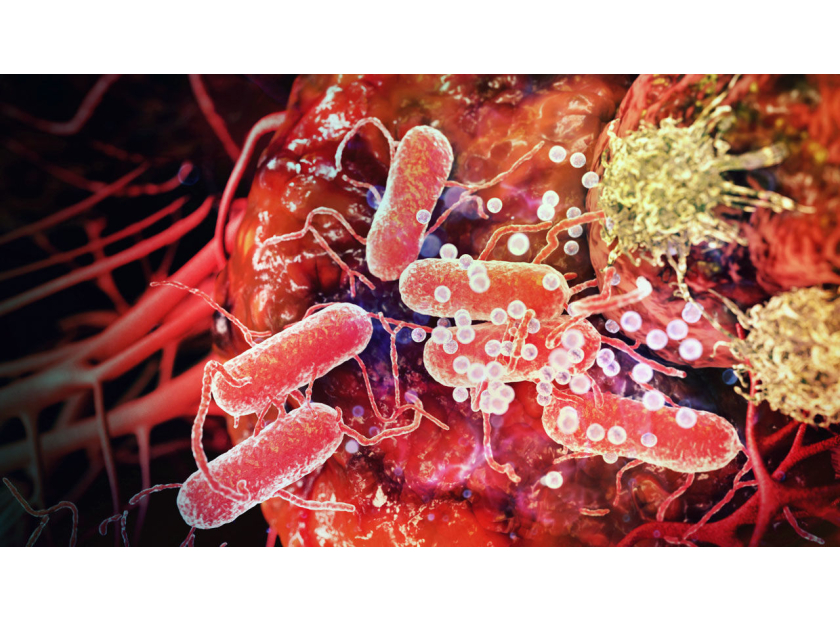Can Bacteria be Used to Attack Tumors?
Bacteria are commonly considered a culprit leading to cancer. However, recent research suggests that some bacteria, being a potential enemy can also be a friend, and thus be utilized to create novel cancer therapeutics and treatments.(1, Figure 1)
A great deal of research ahs centered on using bacteria to reduce the size of tumors. Tumors harbor hypoxic regions within them with can be inoculated with anaerobic bacteria (or bacteria engineered to be anaerobic). These bacteria infect the tumor region by cannot survive else in the body.(1,2) Studies have already shown that strains of Clostridia, Bifidobacteria, and Salmonella can effectively invade tumor cells and reduce the size of the tumor, with no harm to the patient.(1)
Other studies have shown the impactful role of bacteria have in fighting cancer through drug development. Recently, researches have developed methods to increase P450 protein production in bacteria to improve manufacturing processes for cancer drugs. P450s are plant proteins that synthesize other metabolites which can be used to create terpenoids, a class of compoud used in cancer drugs.(3)
Previously, researches have struggled to produce P450s in recombinant cells. However, Vaxquez-Albacete et. al found that P450s could be efficiently produced in microbes by applying signal peptides to the bacterial host's recombinant genome and engineering the N terminus of the peptide sequence.(2) After analysis with GFP tagging techniques, increased expression of P450s was observed in an Escherichia coli system. (3)
what does this mean for cancer drugs? A lot, actually. Many cancer drugs are still produced using plant-based techniques. For example, the chemotherapy trug Taxol is a P450 and is still produced using the needles of a European Yew tree.(4) Harvesting form the trees is a high labor, low yield process leading to a drug that costs over $4,000 per month.(5,6) In 2010, Ajikumar et. al found that Taxol's precursors can actually be produced in E. coli along its terpenoid pathway.(4) This method, combined with the method of the Vazquez-Albacete group developed, can result in huge increases in P450 proteins.(3,4)
Although this was a great improvement, there were still process inefficiencies because the final Taxol product required so many (and some undiscovered) reactions.(4) However, the Vaxquez-Albacete group's discovery could be the framework from future cell factories for cancer medication.(3) A more efficient manufacturing process would allow drugs to be more affordable for patients.
Bacteria are not solely a cause for concern for cancer research. They can be exploited to both help kill tumors at their source within patience and to produce drugs. As more is understood about their efficacy and safety, oncologists, researchers and patients alike will reap the benefits of more effective and cheaper bacteria-based treatments.

Works Cited
1. https://www.ncbi.nlm.nih.gov/pmc/articles/PMC5856380/
2. https://www.ncbi.nlm.nih.gov/pmc/articles/PMC3365283/
3. https://pubmed.ncbi.nlm.nih.gov/27748524/
4. https://www.ncbi.nlm.nih.gov/pmc/articles/PMC3034138/
5. https://www.mskcc.org/sites/default/files/node/25097/documents/120915-drug-costs-table.pdf
6. https://pubmed.ncbi.nlm.nih.gov/21487833/







